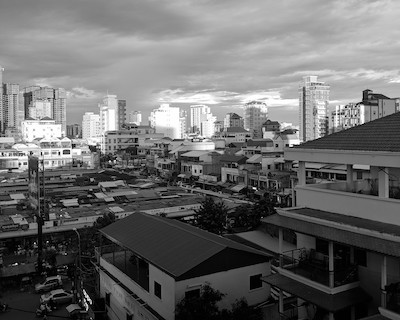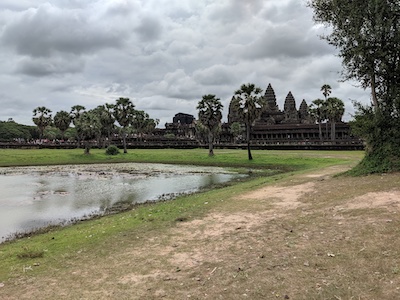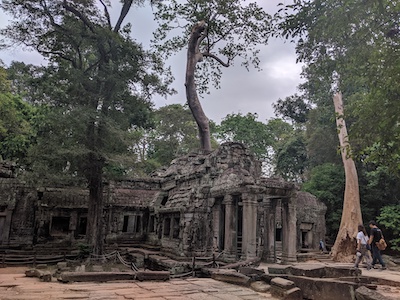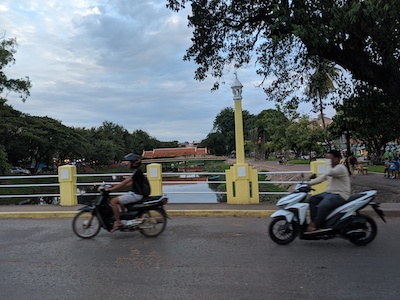July 6

It’ll be a pretty short blog this week. There’s not much new to report from work, although I’m starting to wrap up the main section on Cambodia’s laws. I’ve been focused on summarizing and analyzing all the laws I can find that might be related to land disputes and sustainable development. That means I’ve gathered a lot of information but for this report to be useful for ODC I need to spend some time contextualizing and organizing that information. So that’s what I’ll be up to for the next four weeks.
I did take a short break from the research grind this weekend, traveling with my roommate Ally up to Siem Reap, which is the town closest to the Angkor Archaeological Park. We saw Angkor Wat, which was incredible (the views from the highest level, which at one time only the King was allowed to visit, were particularly beautiful) but the park is home to hundreds of other temples, all built at the height of the Angkor Empire. Unfortunately, the people of Angkor built everything but their most important temples out of wood, so there’s no trace of the massive city that used to be here aside from the temples and the huge canals they built for irrigation. The city itself had long been abandoned by the time Europeans arrived in the region, and for a long time the French considered it a lost city that might have never existed, like El Dorado in the Americas. The local Khmer people, however, never forgot where it was and were even actively using the site for religious ceremonies when the French stumbled across it in the 19th century.

I had actually visited the site before and so I knew a bit of its history, but it was Ally’s first time and so we got a guide to show us around and give us the history of a couple of the major temples. It’s an incredible place and the Cambodian people are justifiably proud of having such a major archeological site in their country (they’re so proud of the site that Angkor Wat features prominently on the Cambodian flag).

restoration work as Angkor, because the trees are quite literally
holding up the buildings.
It’s also the main tourist attraction of the country, and so once Cambodia opened up to tourists in the 90s funds from international travelers were (and are) a major source of income for the country. That’s reflected in the quality of development that’s happened in Siem Reap itself. It’s smaller than Phnom Penh, with a population of about 150,000 in the city compared to 1.5 million in Phnom Penh. It feels more like a town than a city, with low buildings lining wide, dusty streets with comparatively little traffic. The city center is entirely given over to the tourist trade centered on one of the busiest pub streets I’ve ever seen, with a huge market dedicated to the kinds of souvenirs you find in any southeast Asian city. For all that, though, there’s a calmer, more peaceful energy to the city than a lot of places in the region.

So far, the development of this region has taken a slightly different turn than the rest of the country, and while I have a couple of theories why Siem Reap is so different, the change probably comes down to the fact that the city has been receiving tourist money for a lot longer than other parts of the country. Even under the French, this part of the country was one of the nice places wealthy people would go to get out of Phnom Penh, which even then was busy and polluted. Once the country began to recover from the Khmer Rouge, this was the first place tourists wanted to come, and for a long time it was the only place in Cambodia they would come. That means the place was profitable before the international real estate developers who built modern, towering skyscrapers, and because the town is now popular for its slower pace, no one has an incentive to change. It’s a very different place from Sihanoukville, where European tourists only started going about 15 years ago. International developers followed shortly after and have utterly transformed the place from a city of low, traditional Cambodian shophouses to hundreds of modern steel hotels and casinos.
Aside from all the thoughts about Cambodia and economic development, Siem Reap made for a wonderfully relaxing break from Phnom Penh. I’d go back in a heartbeat and spend more time exploring the many other ancient archaeological sites in the region, but I’m so glad I got to spend at least a weekend seeing one of Cambodia’s best attractions.